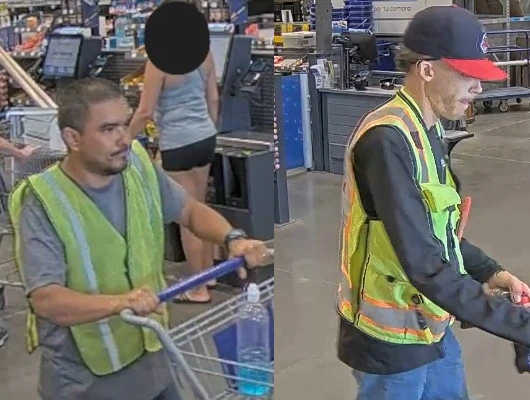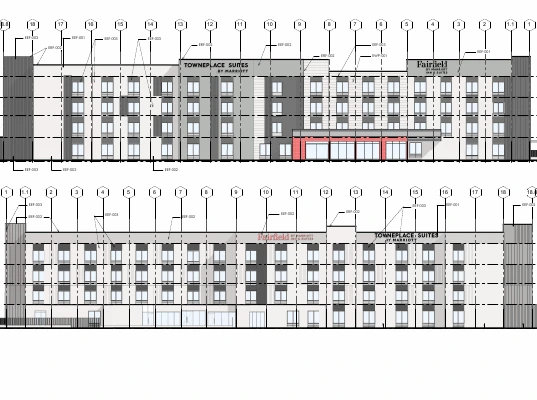Key Points
- Unanimous Approval: Casa Grande City Council voted 7–0 on Sept. 15, 2025 to approve a 10-year, $10M Safe City Initiative contract with Flock Safety.
- Technology Deployment: More than 220 devices will be added, including 100 license plate readers, 100 PTZ cameras, drones, gunshot detection, and integration with third-party cameras.
- Funding: First three years are covered by grants and existing allocations; later years require up to $1.36M annually.
- Oversight: Internal audit trails exist, but no independent oversight or public reporting is in place; policies still need to be developed.
- Public Records: Casa Grande owns the data, but disclosure rules are unsettled—footage is deleted after 30 days unless saved as evidence, and lawsuits and legislation are still shaping public access at city, state, and national levels.
- Flexibility: The contract allows Casa Grande to scale back or terminate with 30 days’ notice at the end of any contract year.
- Resident Concerns: Opponents warn of a citywide “surveillance dragnet,” questioning cost-effectiveness and pointing to mixed results elsewhere.
The Casa Grande City Council unanimously approved a 10-year, $10 million contract with Flock Safety for the Safe City Initiative during their September 15, 2025 meeting, moving forward with what officials call a comprehensive modernization of the city’s public safety infrastructure. The proposal was first discussed during an August study session where no vote was taken. The contract amount does not include taxes, with the order form estimating $1,125,075.02 in tax liability.
The Contract and Final Vote
The council approved Resolution 5818, which authorizes the city to enter into a sole-source agreement with Flock Group, Inc. for the implementation of the Safe City Initiative. The vote was 7-0, with Mayor Lisa Navarro Fitzgibbons and all six council members – Rebecca Romo, Sean Dugan, Brent BeDillon, Anthony Edwards, Bob Huddleston, and Matt Herman – voting in favor after extensive discussion about the technology, funding mechanisms, and oversight procedures.
The initiative will deploy the following equipment:
| Equipment | Quantity | Description |
|---|---|---|
| License Plate Readers (LPRs) | 100 new units | Solar-powered cameras that capture license plates and vehicle characteristics, adding to the 22 already in use |
| Solar PTZ Video Cameras | 100 units | Pan-tilt-zoom cameras with 25X optical zoom for parks and neighborhoods |
| Community Partnership Cameras | 10 units | Video cameras provided to local businesses for collaborative security |
| Video Integration Gateways | 10 units | Systems that integrate third-party cameras into the Flock platform |
| Mobile Security Trailer | 1 unit | Portable surveillance unit with multiple cameras and deterrent lighting |
| Drone-as-First-Responder System | 2 sets | M4TD drones with Dock 3 automated charging stations for emergency response |
| Gunshot Detection System | 1 system | Audio sensors covering 1 square mile that detect and locate gunfire |
All equipment will be integrated through Flock’s central platform for unified monitoring and data sharing.
Current System Success and Chief’s Arguments
Police Chief Mark McCrory highlighted the existing success of the city’s current Flock system, stating: “We currently have 22 LPRs within our city limits… We’ve had 212 stolen vehicles identified, 168 arrests that were related directly to our LPRs, and over 580 times, our detectives has inputted data and information into this FLOCK camera to help them in investigations.”
Chief Mark McCrory provided examples of the system’s effectiveness, including: “we used the FLOCK system through Maricopa, Tempe, and a town in Texas to apprehend a double homicide suspect, where the homicides took place in our city, and that was a direct result of FLOCK technology.”
The chief emphasized the significant financial commitment, acknowledging: “We realize that there is a big financial impact to the city of Casa Grande. This is a 10-year contract amounting for the Safe City Initiative that ultimately, in the 10-year span, will cost $10,011,962.”
Funding Structure and Early Years Coverage
The contract’s funding structure became a key selling point for council members. Chief Mark McCrory explained that “basically, year one through three is already paid for” through a combination of existing budget allocations and grants.
The funding breakdown includes:
- $144,000 already allocated to the police department for surveillance cameras and license plate readers
- $200,000 allocated to Parks and Recreation for surveillance cameras (including approximately $45,000 in carryover funds)
- $200,000 allocated to the City Manager’s Office for surveillance cameras
- $300,000 from the State of Arizona for a Police Department project (real-time information center)
- $56,760 grant from the Gila River Indian Community (approved in the consent agenda)
The annual payment structure shows:
- Year 1: $300,000
- Year 2: $322,285
- Year 3: $322,285
- Year 4: $877,392
- Years 5-10: $1,365,000 annually
Chief Mark McCrory explained that the first-year amount was increased from the original proposal to accommodate spending state grant money within the current fiscal year: “when the state legislature gave us the money and some of our grant programming, we did not have a choice but to spend it within this fiscal year. So we contacted FLOCK and asked them to restructure our contract so that we could use up all the available grant money that we have coming to us.”
Chief Mark McCrory noted they have applied for four grants in total—one approved (the Gila River Indian Community grant for $56,760) and three others.
Internal Audit Trail – No Public Oversight
The Flock system includes internal tracking capabilities, though no public oversight mechanisms were established. Chief Mark McCrory emphasized the internal tracking: “There is a audit trail going into that. Our officers can’t look anything up. Our officers can’t put anything in unless they put a reason in there and that audit trail is kept forever.”
He clarified the system’s focus: “we really do care if somebody is going out to one of our parks and robbing somebody or making life miserable for somebody in our parks. That’s the people we’ll be looking at and again. If we do look at them, it’s documented, who looked at them, what they were looking for, when they looked for it, etc.”
Public Records Access
The contract acknowledges that information could be subject to public records requests. The agreement states that nothing prevents disclosure “pursuant to any public records request received by Customer” (the City). If Flock receives a court order or legal request to disclose footage or data, the company commits to immediately notify the City so officials can decide whether to object.
During the 30-day retention period, Flock may disclose footage to law enforcement, government officials, or third parties if legally required or if the company has a good faith belief that disclosure is reasonably necessary to comply with legal process, enforce the agreement, address security or technical issues, or respond to emergencies. Data is automatically deleted after 30 days unless saved as evidence.
Internal Audit Limitations
City Attorney Brett Wallace confirmed that the audit trail serves as the primary safeguard against misuse, but noted it requires department-level action: “The fail-safe there, if you have one, is that you have that audit trail, and so the police department can put in procedures to take a look at that and see. If someone’s running 3,000, 4,000 times of a single car, they can identify that and deal with it appropriately within the department.”
The contract and meeting documents contain no provisions for independent oversight of system usage. The audit capabilities rely primarily on internal department monitoring, with no established procedures mentioned for regular audits or systematic public reporting on usage patterns.
While the contract establishes that Casa Grande owns all surveillance data, the documents do not specify which city officials beyond police personnel would have access to the system or what oversight procedures will govern its use. These operational policies would need to be developed by city leadership following the contract approval.
Legal Battles Over Public Access
Flock Safety systems face ongoing legal challenges regarding public access to surveillance data through Freedom of Information Act (FOIA) requests. In Virginia, Cardinal News won a FOIA court case in April 2025 requiring the city of Roanoke, Virginia to provide Flock footage to a reporter who requested images of his own vehicle. However, Virginia subsequently passed HB 2724 in July 2025, which now exempts automatic license plate reader (ALPR) data and audit logs from public disclosure under the state’s Freedom of Information Act, effectively rolling back the access that journalists had won.
These cases highlight the ongoing tension between law enforcement surveillance capabilities and public access to government records through FOIA laws.
Contract Termination Options
The contract includes multiple exit strategies for the city. City Attorney Brett Wallace explained: “we did work with Flock, and they understand that it’s important for councils and kind of required under Arizona law, when you’re looking at a long-term thing to have the ability to get out if this council or a future council decides not to appropriate those funds. And that could be in year two, it could be in year 10.”
Wallace added: “And in order to ensure that it’s not just a termination, we’ve also worked with them to make sure that you also have the ability not just to terminate it, but to scale it back as well those clauses are in the agreement to make sure that this council or a future council can get out of the contract, if it needs to by not appropriating the money for future years.” The contract requires 30 days written notice prior to the end of any contract year for non-renewal or scaling back.
The scaling-back provision allows the city to reduce the number of cameras or relocate them. Flock representative Hamza Al Baroudi confirmed that camera relocations involve “a shared cost” and that the company would “fly a technician out here, and we move the cameras and we position them in a place that the police department or public works or joint efforts decide that the camera would be more valuable.”
Chief’s Response to Councilmember Romo’s Concerns
Addressing Councilmember Rebecca Romo’s earlier questions about crime reduction data, Chief Mark McCrory acknowledged: “Council Member Romo, I don’t feel like we answered your question on crime reduction.”
He explained that while other departments with similar systems show crime reduction, “what they choose not to do is say it’s solely based on FLOCK, because there’s patrol officers, there’s community effort. There’s all kinds of stuff. So they don’t keep track of that.”
Chief Mark McCrory committed to better data tracking: “Our plan is, and we’ve talked about this, is that when we set this up, we’re gonna be able to come and give you a very educated guess or number of how many arrests are directly associated with our PTZ cameras, with our FLOCK equipment, our gunshot detection, and our drones.”
Technology Updates and Future-Proofing
The contract addresses technology obsolescence through guaranteed updates. Chief Mark McCrory highlighted this advantage: “With this contract with FLOCK, we are guaranteed by contract to get up-to-date software for the next decade. We are guaranteed to get up-to-date hardware for the next decade for the price that we’re buying it today.”
Flock representative Al Baroudi explained the update mechanism: “All software that we launch over the next 10 years is going to be included for the City of Casa Grande at no additional cost.” For hardware, he clarified that “there are two refreshes built in over the next 10 years to where we can take down a certain number of cameras or drones or whatever the case may be for whatever the latest thing is that we’re going to carry” when Flock stops supporting older equipment models.
Real-Time Information Center Staffing
Chief Mark McCrory outlined plans for staffing the new Real-Time Information Center, explaining that Officer Chris Mendez would initially lead the operation. “What we plan on doing originally is staffing this with a current sworn officer who has shown a lot of enthusiasm to get on the ground floor of this, and Chris Mendez would be the one that’s standing this up for us.”
The chief noted that the center is designed for two-person operation for optimal effectiveness: “The real-time information center is set up to be most effective with two people in there operating at one time. One person operates the drones while the other person relays current information to the field units and dispatch.”
City Project vs. Police Project
Chief Mark McCrory positioned the initiative as benefiting the entire city: “I already mentioned the fact that we do think this is a city project… It is a great tool for the police department, but I think citywide, I think there’s a benefit to this proposal for several other departments.”
He cited specific examples where cameras could have helped solve crimes in city parks that remain unsolved.
Phone Surveillance vs. Flock Surveillance Comparison
Chief Mark McCrory addressed privacy concerns by comparing Flock cameras to smartphones: “I know people are worried about Big Brother to some degree, which I’m not making light of somebody else’s concern. But when people call with these concerns or email you with these concerns, I hope they’re doing it on a rotary phone or by snail mail. Because if they’re doing it on their phone, that phone is capturing a thousand times more information than Flock will.”
He emphasized the system’s limitations: “they dump everything every 30 days unless it’s evidence.”
Council Member Positions
Bob Huddleston
Councilmember Huddleston, a former Casa Grande police chief who served from 1999 to 2013, strongly supported the initiative, citing two key factors. He appreciated the cross-departmental integration: “We’ve all seen over the years, especially IT software and hardware, on different departments that ended up wasn’t compatible and couldn’t speak to each other and eventually it costs us several times over to try to make that work.”
He also valued the proactive approach: “too often, we as a council have to look at things that are to catch up. We’ve fallen behind in a certain area and now we’re almost desperate that we have to spend the money… Perfect example is probably Station 3.”
Huddleston emphasized the contract’s safety net: “the money is, as far as I can tell, accounted for upfront for the early years and with the option that you said, if we hit a struggling year or we decide the program is just not working, we can back out of it. And I think that’s a great guarantee that’s a good option that, for me, seals the deal so I’m all in favor of it.”
Matt Herman, Mayor Pro-Tem
Herman supported the budget flexibility, noting the city found existing funds for the first three years and appreciated the contract’s exit options. He addressed privacy concerns by arguing that extensive surveillance already exists in daily life: “I did have concerns about the Big Brother aspect of it and, like I said, I went to the airport the other day and they take your picture and say, ‘You don’t have to get your picture taken.’ I’m like, ‘Well, you have my picture on my passport, on my driver’s license, on all these cameras here anyway.'” His point was that people are already subject to constant data collection and photography, making concerns about Flock cameras inconsistent. He emphasized that “public safety’s always at the top of our citizens’ concerns and our concerns as well.”
Rebecca Romo, Sean Dugan, Brent BeDillon, and Anthony Edwards
Councilmember Romo voted in favor despite having previously expressed concerns about crime reduction data. Councilmember Dugan expressed support without elaborating on specific reasons, stating: “All my questions have been answered. Thank you very much for bringing this in front of us.” Councilmembers BeDillon and Edwards voted in favor of the contract but did not make public statements during the discussion portion of the meeting.
Mayor Lisa Navarro Fitzgibbons
Mayor Fitzgibbons expressed initial caution but eventual support, acknowledging her nervousness about being “the test market” for new technology. She emphasized the importance of having exit options and legal safeguards: “I just wanna make sure that our legal department, Brett and his team have looked at that contract and there’s nothing hidden in there, that we are safe to say that we can get out of it pretty easily.”
After receiving confirmation from City Attorney Wallace about the contract’s termination provisions, the mayor voted yes but with conditions, stating she wanted to “follow up on some of the questions” and research other cities’ experiences with similar systems during the implementation period to identify potential issues before they occur in Casa Grande. She emphasized the importance of gathering lessons from other cities’ experiences during the implementation phase.
Camera Location Planning Process
The camera placement involves extensive collaboration between Flock Safety and city officials. Flock representative Al Baroudi explained: “we also took the raw data from the calls for service for the City of Casa Grande, and we broke them down to figure out where the hotspots are and where we’re gonna be able to get the most effect out of these camera locations.”
Al Baroudi said his team, made up of former law enforcement, worked with Casa Grande officials to place cameras strategically: “myself, as well as my team, which is made up of former law enforcement, all spent a lot of time to make sure that these are placed strategically and to help you reduce crime and identify the problem areas that the City of Casa Grande will face.”
Resident Opposition
Resident Marco Cruz spoke against the contract, arguing it creates a “surveillance dragnet throughout the city of Casa Grande.” He raised concerns about the cost-effectiveness, citing Austin, Texas data: “an audit found that Flock Safety’s program scanned 75 million license plates in about a year, and that produced about 165 arrests. That’s over $7,800 per arrest.”
Cruz also highlighted system limitations, referencing the recent murder of Charlie Kirk: “According to deflock.me, which tracks deployments of these cameras, there were about 20 Flock cameras last week around the Utah Valley University campus during the Charlie Kirk shooting last week. And there were another 17 Flock cameras along the shooter’s 250-mile drive home, yet the attacks still happened, the cameras didn’t stop it, and they didn’t catch him.”
Addressing Misuse Concerns
City Attorney Wallace acknowledged that misuse remains a concern: “I think misuse is always a concern and it’s up to the department to be responsible for it, right? And you have to trust what your department can do.”
He noted that departments can use audit trails to identify unusual usage patterns and address them internally: “you just trust that they’re not gonna do that. The fail-safe there, if you have one, is that you have that audit trail, and so the police department can put in procedures to take a look at that and see.”
Due Diligence on Other Cities
Mayor Fitzgibbons emphasized the need for learning from other jurisdictions: “I think we should do our due diligence on some of these other cities and find out what those issues were and so we can prevent those from happening here.”
The unanimous approval positions Casa Grande to begin implementation of what officials describe as a cutting-edge public safety system while maintaining the flexibility to adjust or withdraw if the technology doesn’t meet expectations or if funding becomes unavailable in future budget cycles.









Flock systems are not about “Public Safety” it’s about surveillance, creating a “Panopticon” Orwellian surveillance state. It’s part of the greater digital control grid being implemented. https://solari.com/the-fast-approaching-digital-control-grid-a-checklist-of-trump-administration-actions-to-date/
Consider this out of Colorado: https://www.youtube.com/watch?v=-kZgNHcNBuM where a woman was accused of a crime she didn’t commit, all because of a Flock camera, a case of presumed guilty. When the cop in the video says to her, “You know we have cameras in that town, you can’t get a breath of fresh air in or out of that place without us knowing” that’s frightening. Is that the world you want to live in? Not me.
Flock a Peter Thiel funded company. If you don’t know Peter Thiel, his company Palantir is the engine that powers the national surveillance State, and thanks to DOGE has access to your personal Health data, Financial data, and is a CIA, FBI, Homeland Security contractor.